We are right back where we were in 1981. Baying for a fairy tale. On April 29, 2011, a future king and his bride will once again play perfect protagonists of a fantasy millions of viewers around the world, haven’t lived. There will probably be a glass carriage or a state landau. Miles of cheers and showers of confetti. A bouquet that everyone will talk about. And the dress which at the moment is a classified secret, but will be one of the most photographed and discussed moments in recent history.
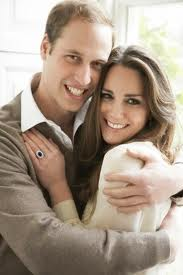 There will be a balcony kiss perhaps and we will feast hungrily, greedily on imagery that is usually reserved for pop up picture books and Disney Land. There are comments also about how a wedding worth millions of pounds is good for the spirit of a recession hit Britain. And ofcourse, don’t we all love, love stories, especially when they come wrapped in bows and ribbons and unspool in the white hot gaze of the world media?
There will be a balcony kiss perhaps and we will feast hungrily, greedily on imagery that is usually reserved for pop up picture books and Disney Land. There are comments also about how a wedding worth millions of pounds is good for the spirit of a recession hit Britain. And ofcourse, don’t we all love, love stories, especially when they come wrapped in bows and ribbons and unspool in the white hot gaze of the world media?
TV shows on every channel are taking apart every nuance of the Prince William and Catherine Middleton love story and there are endless shots of Kate walking past a pack of photographers. And one can’t help remembering a shy 19-year-old in a blue sweater, with a downward gaze and a half smile, making her way to a kindergarten where she taught briefly before she was handpicked to be a princess and possibly a future queen.
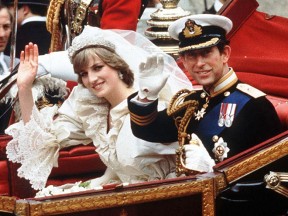 Amongst the many retrospective narratives about royal brides on TV channels, one show recounted some telling moments of Princess Diana’s wedding day. The voluminous ivory taffeta and antique lace gown with its 25 feet train was to capture the world’s imagination but the bride wanted to imprint her future husband’s senses with the perfume she was wearing. “I want him to know, its me,” she was supposed to have said.
Amongst the many retrospective narratives about royal brides on TV channels, one show recounted some telling moments of Princess Diana’s wedding day. The voluminous ivory taffeta and antique lace gown with its 25 feet train was to capture the world’s imagination but the bride wanted to imprint her future husband’s senses with the perfume she was wearing. “I want him to know, its me,” she was supposed to have said.
She was a woman in love but was letting every one know that she would do things her way. Whether it was choosing a virtually unknown designer David Emanuel to create her iconic wedding dress, or resisting the numerous etiquette classes or leaving out the word ‘obey’ from the wedding vows, she was as well-meaning dowagers would say, “difficult.”
Infact Lady Pamela Hicks, who was a bridesmaid when the Queen married Prince Philip, says Kate like Diana has strong ideas too about what she wants to do but is far more “cooperative.” That one word sums up why Kate may succeed where Diana failed. Diana was far younger than Kate and had not even been able to clear her O levels. She was an average kid, though staggeringly beautiful but as the world would discover later, had the gift of empathy and a warmth that made her more than just a token Royal.
Her interviews at the time of her engagement show that she was an innocent girl ready for the love story of her dreams but there was something she would discover over time. That love is not an institution. And in an institution even bigger than marriage, she was not chosen to be loved but to fulfil a role. As a 20-year-old virginal nursery school teacher who also came from a good stock, she was expected to be accommodating, to be grateful, to serve and do without personal happiness if necessary.
It was a marriage of cross purposes. She had not married the monarchy. She had married for love but the man who married her possibly wanted more than just love from her. She could play the role of a charismatic public figure as it turned out subsequently, better than even those who were born and bred to the part but more than anything else, she wanted a husband who loved her, who did not watch her from a distance while she struggled with isolation, the stress of being watched by the media and the royal family, postpartum depression, a reactive bulimia and the label of someone who was “unstable” just because she was, as she said years later in the famous Panorama interview with Martin Bashir, “led by the heart rather than the mind.”
Very early in her marriage, she started inflicting wounds on herself because,”when there is so much pain inside you, you want to physically harm yourself.” These were all cries for help, she said but she ended up becoming more and more isolated in her marriage and the palace because on one hand, she was a bigger draw at public engagements than her husband and unwittingly causing heartburn and on the other, she was behaving like a truant child who just wanted love that no one was willing to give her.
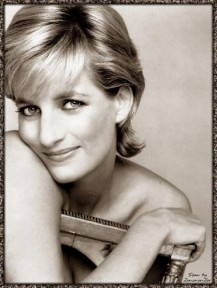 It is easy to see why the Family she married into, thought of her as a loose cannon. Every family has its own rulebook about love and marriage and the monarchy had one which was centuries old. Diana ofcourse confessed to Bashir later that she had always played by her own rules and what a surprise that must have been to those who thought they had brought home a cog in the wheel while she turned out to be woman who fought calumny with calumny and “would not go quietly.”
It is easy to see why the Family she married into, thought of her as a loose cannon. Every family has its own rulebook about love and marriage and the monarchy had one which was centuries old. Diana ofcourse confessed to Bashir later that she had always played by her own rules and what a surprise that must have been to those who thought they had brought home a cog in the wheel while she turned out to be woman who fought calumny with calumny and “would not go quietly.”
Who would have expected that of her when she walked down the aisle looking like a child swallowed by a cloud of taffeta? From being a baby faced princess, she became a woman with singular disinterest in protocol and a deep appetite for real things like warmth and love and joy even in a situation that denied her of all these.
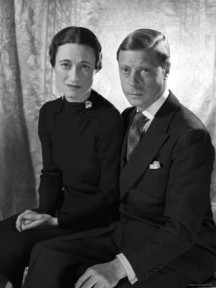 She was not the first royal to have rebelled against the lovelessness that came with the territory. King Edward VIII had abdicated the throne to marry Wallis Simpson, a divorcee.
She was not the first royal to have rebelled against the lovelessness that came with the territory. King Edward VIII had abdicated the throne to marry Wallis Simpson, a divorcee.
Sarah Ferguson, Prince Andrew’s wife, without any of Diana’s charm and goodwill had gone down spectacularly too in a blaze of bad publicity but Diana went on from being a victim to a rebel who even had a cause, or many, bigger than her.
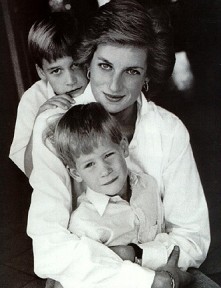 She stopped waiting to be rescued by a husband who had by now moved on to his old love Camilla Parker Bowles and instead began to invest her thwarted emotional energy into her children, occasional lovers, people in distress and most importantly causes that sustained her during difficult times. Love let her down repeatedly though. Especially James Hewitt, who went on, as she said to, “make money out of me” even though she “loved and adored him.”
She stopped waiting to be rescued by a husband who had by now moved on to his old love Camilla Parker Bowles and instead began to invest her thwarted emotional energy into her children, occasional lovers, people in distress and most importantly causes that sustained her during difficult times. Love let her down repeatedly though. Especially James Hewitt, who went on, as she said to, “make money out of me” even though she “loved and adored him.”
She kept searching for a man who would answer the need she had for unconditional acceptance and validation but was also finding purpose in the work she had come to love. She was not a detached, hand waving royal walking on rarefied ground. She was demonstratively caring towards people dying in hospitals, addicts in drug shelters, women who like her were going through bad marriages and suffering from a lack of self-esteem.
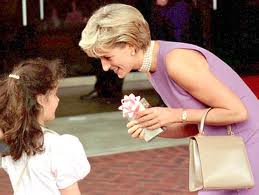 She hugged AIDS patients and from a princess known only for her show biz friends and blinding glamour, she became a serious spokesperson for landmine victims and went on to head hundreds of charities. She said famously that she wanted to be the “light at the end of a tunnel” for those who needed it. That she wanted to help people who had felt chronically unloved just like herself, with a moment of pure human connection. With a smile, a handshake and genuine eye-contact.
She hugged AIDS patients and from a princess known only for her show biz friends and blinding glamour, she became a serious spokesperson for landmine victims and went on to head hundreds of charities. She said famously that she wanted to be the “light at the end of a tunnel” for those who needed it. That she wanted to help people who had felt chronically unloved just like herself, with a moment of pure human connection. With a smile, a handshake and genuine eye-contact.
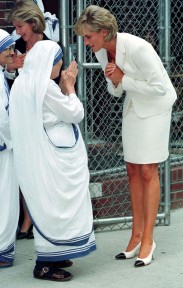 In just over 10 years since her marriage, Diana went on from being a tremulous English rose, a young girl desperately in love with her husband and craving for his attention to a woman who fought tooth and nail to save her sanity and the space she had made for herself in public life. Her husband’s office, she confessed released tapes of private conversations to shame her in public.
In just over 10 years since her marriage, Diana went on from being a tremulous English rose, a young girl desperately in love with her husband and craving for his attention to a woman who fought tooth and nail to save her sanity and the space she had made for herself in public life. Her husband’s office, she confessed released tapes of private conversations to shame her in public.
They tried to paint her as a publicity hungry woman who manipulated the media to get sympathy but like she repeatedly said, she was never a threat to anybody. She was not the enemy or a destructive person. She just wanted to raise her boys and be of use to the people who she had come to love and who loved her.
There was her unauthorised biography by Andrew Morton, the shadows she fought through her friends in the media and alone but through an increasing dread that she was now no longer protected by the establishment she had been a part of but up against it, Diana kept looking for love. The search ended prematurely, less than two years after the Martin Bashir interview, in a Paris tunnel when the press, she had been accused of feeding, chased her car into a dead end with a man who had possibly given her the happiness she had longed for all her life.
30 years after Diana Spencer walked down the aisle, another young girl is being primed to be the next queen and the same circus is being played out. Pictures of Kate on roller skates when she embarrassed the press with her skimpy disco shorts. Shots of her mother chewing gum at a passing out parade and the controversy her uncouth manners created. The merchandise factories in an overdrive. Questions about whether Kate will succeed where Princess Diana and Sarah Ferguson failed.
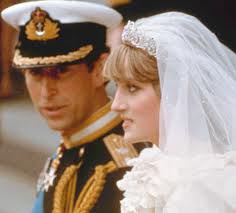 Have any lessons been learnt at all? Do we get at all, that a wedding, any wedding, even if it is a televised extravaganza is not about us? Or about the institution of royalty which for all you know, will become obsolete in the next 50 years? Marriage when pared down to essentials is always about two people and what they can add to each other’s lives. Everything else and everyone else comes next. Hopefully William and Kate have learnt what we have not from Charles and Diana’s tragedy. That compatibility is not a social etiquette. That love needs time, togetherness and privacy and not just chariot rides into the sunset. Hopefully this time, the bride is not marrying just an institution but a man who loves her. Hopefully, this love story will continue even after the last cake crumb has been eaten and the last reveller has left the palace gates.
Have any lessons been learnt at all? Do we get at all, that a wedding, any wedding, even if it is a televised extravaganza is not about us? Or about the institution of royalty which for all you know, will become obsolete in the next 50 years? Marriage when pared down to essentials is always about two people and what they can add to each other’s lives. Everything else and everyone else comes next. Hopefully William and Kate have learnt what we have not from Charles and Diana’s tragedy. That compatibility is not a social etiquette. That love needs time, togetherness and privacy and not just chariot rides into the sunset. Hopefully this time, the bride is not marrying just an institution but a man who loves her. Hopefully, this love story will continue even after the last cake crumb has been eaten and the last reveller has left the palace gates.






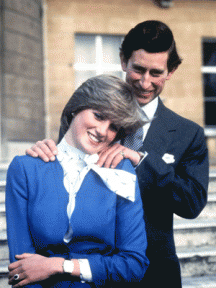
Nice one Reema!
Yes, I remember the media circus around Charles and Diana’s wedding … more so because my Dad was in London on tour and brought back souvenir card packs and coffee table books. And I remember us kids treating all that much as we treated the fairy tales we used to read … and yes, hope this one is a success, and a real marriage …
In your inimitable way, you have voiced the thoughts of so many of us on this day. 🙂 xx
loved it. nice reema 🙂
it’s unfortunate that people all around the world are trying to capture love and keep it caged in a relationship called marrige. It is also true that when you try to imprison love , to put it in bondage, love degenrates and dies. Love is a state of being and cannot be directed by a relationship.
We all have our own ideas of what love should be and that’s why we misunderstand diana. Our own defination of a sati savitri, a faithful and loyal wife, turns diana into a loose cannon.
When she said “led by the heart rather than the mind.”., she was so true. I think it wd have been a greater sin, to her life, had she thought the other way. Yes she was a bird in a golden cage who dared to went out and found its own sky.